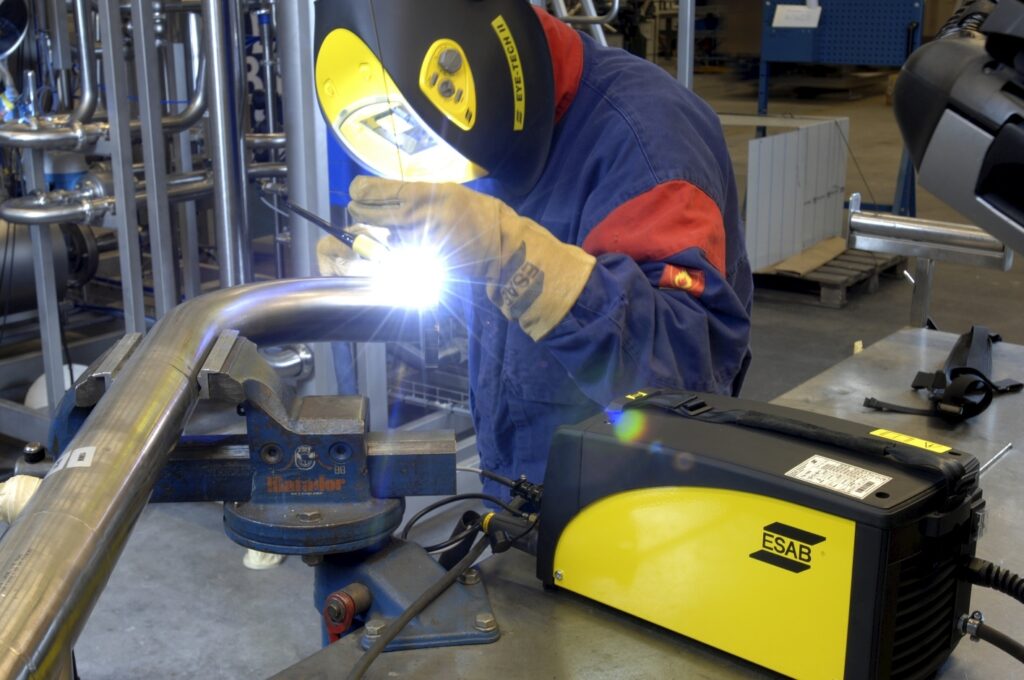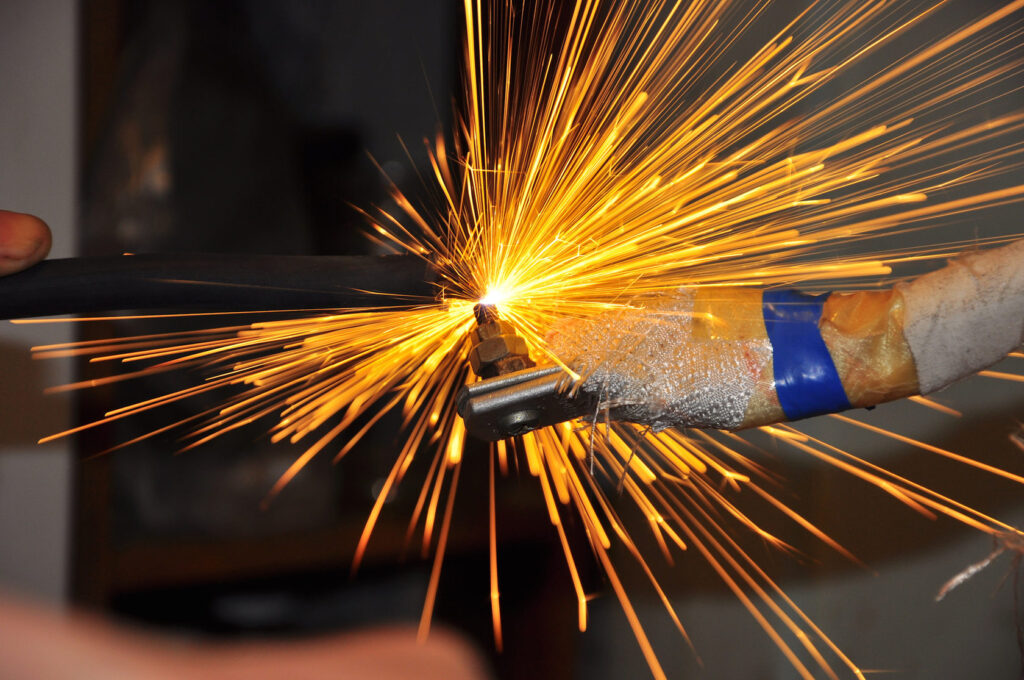What does welding involve?
Welding is the joining of two materials by heating and melting at the fusion point with or without the addition of a filler metal. The molten filler metal together with the molten edges of the parts to be joined, when cooled, forms a single weld.
Application and description of method: TIG welding
TIG welding is welding with tungsten electrodes in inert gas, a process that is part of the fusion welding process, whereby materials are fused together. This technique is used when the highest quality and cleanliness of the welded joint and the absence of any spatter is required. Welding with this method is used for, among other things, stainless steels, aluminium alloys, nickel, copper and thin sheets.
When welding with an inert gas shielded tungsten electrode, the welding arc is formed between the non-fusible tungsten electrode and the work piece. The shielding gas does not affect the welding process itself. It is usually argon and its function is to protect the weld pool and the holder electrode from oxidation.
This welding is used when the appearance of the weld is important to us. This, in turn, involves special requirements for the work, and precision will also be important here. When welding with this technique, it is necessary to have many factors under control, which is more demanding. When welding with a tungsten electrode, the welder moves the handle with one hand, while at the same time the other hand feeds additional material into the weld pool. This means that you have to be able to operate both hands with precision and accuracy.
It is a technique used in many industries, such as sheet metal and aerospace, where very thin materials need to be worked. However, the TIG method is most commonly used for welding pipelines and tubes.

During TIG welding, current is fed through a tungsten electrode. The electrode does not melt as it is heat resistant. An electric arc is then formed which melts the material and the filler metal, i.e. the metal rod, which is fed past the holder, forming a liquid weld pool. When the arc moves away, the weld pool solidifies to form a solid joint. A shielding gas is continuously supplied through the gas nozzle and the welding gun to protect the molten metal from the atmosphere. Noble gases such as pure argon and helium are used.
The chucks are liquid-cooled and the coolant is fed into the chuck and works in a closed circuit with a cooler. Via a current cable, voltage is applied to the tungsten electrode, coming from the source, the so-called welder.
TIG welding variants
Cold wire welding
Feeding the cold wire increases the welding speed, then the filler metal is fed accurately and evenly into the weld pool. In this way, even welders with fewer qualifications can achieve excellent results in their work.
TIG welding with hot wire
During welding, the filler metal is heated. The advantage here is that the feeding and melting of the wire is increased. This significantly increases the welding speed and there is less mixing of the filler material with the parent metal.
ArcTig
The method is a variant of the TIG process for the mechanised fabrication of welded joints. It provides an excellent weld face appearance. ArcTig is a new welding process developed for automated work, which allows us to achieve higher speeds to save time.
Resurfacing
It involves melting a material with an already melted substrate material. This technique is most commonly used for the reconditioning of metal parts. Its purpose is to extend the service life of the component being surfaced. This coating is applied by mechanised surfacing and makes the coating process up to three times faster and more efficient.
Orbital welding
The design of an orbital welding machine includes a moving welding head and a stationary pipe. The process involves moving the welding arc around the component to be welded, usually a pipe. This technique is used when it is necessary to achieve uniform weld quality in the work. Therefore, the main areas of application for this field of welding are pipeline construction, the pharmaceutical industry and the chemical industry. With the orbital welding technique, pipes can be welded into screen bottoms and also joined together.

Features of TIG welding with non-melting electrodes
Pros:
- large stock of metals to be welded
- welding of thin sheets
- high weld purity
- easy control of the weld pool
- complete absence of liquid metal spatter
- easy manual mastery of welding
- the possibility of mechanising and automating the method
Disadvantages:
- low welding speed
- the quality of welds is dependent on skill
- the need for shielding
Questions and Answers
Can TIG welding be used to weld pipes?
The TIG method is most commonly used for welding pipelines and tubes.
Is TIG welding demanding?
Yes, you have to be able to operate with both hands with precision and you can't use one hand to support the handle additionally, which is not easy to do.

































